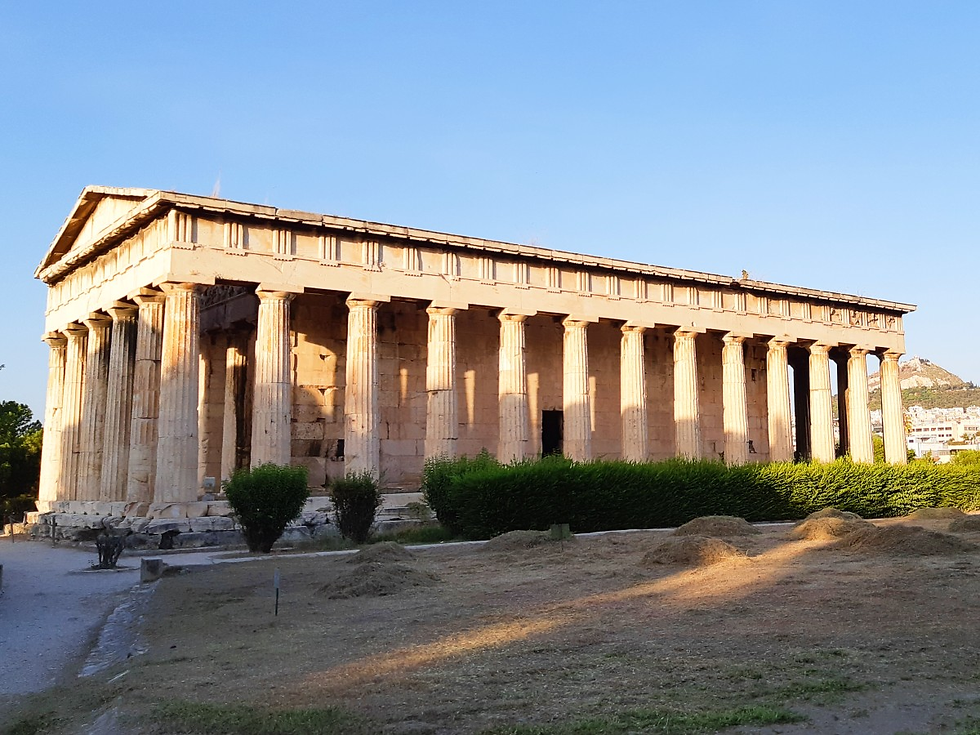Overview of the Ancient Agora and its importance in ancient Athens
- Johnny Ka
- Jul 30, 2023
- 3 min read
Introduction:
Nestled in the heart of Athens, Greece, the Ancient Agora stands as a testament to the thriving civic life and cultural significance of ancient Athens. This sprawling archaeological site was once the bustling center of political, social, and commercial activities, playing a pivotal role in the development of democracy and the flourishing of Greek civilization. In this review, we will delve into the overview of the Ancient Agora and explore its importance in ancient Athens, shedding light on its historical significance and the remnants that have endured the test of time.

Historical Context:
The Ancient Agora dates back to the 6th century BCE and flourished until the 6th century CE. It was an essential hub of civic life, functioning as a marketplace, administrative center, and gathering place for Athenians. As the birthplace of democracy, the Agora witnessed significant historical events, political debates, and philosophical discussions that shaped the course of ancient Athens.
The Stoa of Attalos:

One of the notable structures within the Ancient Agora is the Stoa of Attalos. Originally built in the 2nd century BCE by the king of Pergamon, Attalos II, it was a covered walkway lined with shops, offering a vibrant commercial space for merchants and traders. Today, the reconstructed Stoa serves as a museum, housing an impressive collection of artifacts and providing visitors with a glimpse into the daily life and commerce of ancient Athens.
The Temple of Hephaestus:

Dominating the Agora's landscape is the exceptionally well-preserved Temple of Hephaestus, also known as the Hephaesteion. Built in the 5th century BCE, this Doric temple was dedicated to Hephaestus, the Greek god of fire and craftsmanship. Its architectural grandeur, adorned with intricate friezes and metopes, showcases the exquisite craftsmanship of ancient Greek architecture. The Temple of Hephaestus stands as a testament to the religious and cultural practices of ancient Athens.
The Bouleuterion and the Council of 500:

Within the Ancient Agora, the Bouleuterion served as the meeting place for the Council of 500, one of the principal democratic institutions of Athens. This semi-circular building accommodated the city's elected representatives, who debated and made decisions on legislative matters. The Bouleuterion stands as a symbol of the Athenian democratic system and offers insight into the political governance of ancient Athens.
The Tholos and the Prytaneion:

Adjacent to the Bouleuterion, visitors can explore the Tholos and the Prytaneion, essential components of the administrative complex of the Agora. The Tholos was a circular building that housed the Prytaneis, the highest-ranking magistrates of Athens. It served as a meeting place and a ceremonial space for hosting distinguished guests. The Prytaneion, on the other hand, was the official residence of the Prytaneis and functioned as the political and religious center of the city. These structures offer valuable insights into the governance and administrative functions of ancient Athens.
The Museum of the Ancient Agora:

To further enrich your understanding of the Ancient Agora, a visit to the museum located on the site is highly recommended. The museum displays a diverse range of artifacts excavated from the Agora, including pottery, statues, and everyday objects. These treasures provide a tangible connection to the lives of ancient Athenians and highlight the artistic and cultural achievements of the time.
The Importance of the Ancient Agora:
The Ancient Agora was more than just a marketplace or an administrative center; it was the heart and soul of ancient Athens. It was a place where citizens gathered, engaged in philosophical discussions, and actively participated in the democratic process. It fostered intellectual and cultural exchange, laying the foundation for the development of Western philosophy, art, and political systems. The Agora's influence extended far beyond its physical boundaries, shaping the course of Western civilization.
Conclusion:
The Ancient Agora stands as a captivating window into the vibrant civic life and democratic ideals of ancient Athens. Through its well-preserved structures and archaeological remains, visitors can gain a deeper understanding of the significance of this historical site and its enduring impact on the development of Western civilization. Exploring the Ancient Agora is a journey back in time, immersing oneself in the rich tapestry of ancient Athens' cultural and political heritage.




Comments